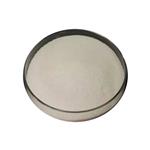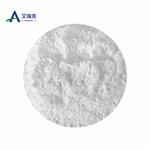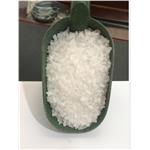- Caprolactam
-

- $6.00 / 1KG
-
2024-04-18
- CAS:105-60-2
- Min. Order: 1KG
- Purity: More than 99%
- Supply Ability: 2000KG/MONTH
- caprolactam
-

- $0.00 / 1Kg
-
2024-04-09
- CAS:105-60-2
- Min. Order: 1Kg
- Purity: 99.9%
- Supply Ability: 200tons
- Caprolactam
-

- $6.00 / 1kg
-
2024-01-08
- CAS:105-60-2
- Min. Order: 1kg
- Purity: 99.96%
- Supply Ability: 500ton
|
| | Caprolactam Chemical Properties |
| Melting point | 68-71 °C(lit.) | | Boiling point | 136-138 °C10 mm Hg(lit.) | | density | 1.01 | | vapor pressure | <0.01 mm Hg ( 20 °C) | | FEMA | 4235 | 1,6-HEXALACTAM | | refractive index | 1.4935 | | Fp | 152 °C | | storage temp. | Store below +30°C. | | solubility | H2O: 0.1 g/mL, clear, colorless | | pka | 16.61±0.20(Predicted) | | form | Crystals or Flakes | | Specific Gravity | 1.042 (20/4℃) | | color | White | | PH | 7.0-8.5 (333g/l, H2O, 20℃) | | Odor | amine spicy | | Odor Type | spicy | | explosive limit | 1.4-8%(V) | | Water Solubility | 4560 g/L (20 ºC) | | JECFA Number | 1594 | | Merck | 14,1761 | | BRN | 106934 | | Dielectric constant | 1.7 - 1.9(0.0℃) | | Exposure limits | ACGIH: TWA 5 mg/m3
NIOSH: TWA 1 mg/m3; TWA 0.22 ppm; STEL 3 mg/m3; STEL 0.66 ppm | | LogP | 0.12 at 25℃ | | CAS DataBase Reference | 105-60-2(CAS DataBase Reference) | | NIST Chemistry Reference | Caprolactam(105-60-2) | | IARC | 3 (Vol. 39, Sup 7, 71) 1999 | | EPA Substance Registry System | Caprolactam (105-60-2) |
| | Caprolactam Usage And Synthesis |
| Production of polyamide fibers and resins | Caprolactam is the main raw material for the production of polyamide fiber and resin. Polyamide fiber, in the United States, is called nylon; in China, is called Chinlon because it was first commercialized in Jinzhou Petrochemical. Chinlon 66 is a polycondensation product of adipic acid and hexamethylene diamine. Polyamide 6 obtained from the ring-opening polymerization of caprolactam.
At present, the master of caprolactam production technology is mainly Sinopec Baling Petrochemical Design Institute and Yueyang Petrochemical Design Institute.
Cyclohexanone and phenol are the main raw materials for the production of caprolactam:
Cyclohexanone is a kind of important chemical raw material with wide range of application fields. It is colorless and odorless transparent liquid with mint and acetone odor. It is slightly soluble in water and soluble in ether, alcohol and other organic solvents. It is mainly used as the intermediates of caprolactam and others diacids and their salts. Because of its strong solubility, low toxicity and relatively low price, it is widely used as solvent and thinner for various paints, paints, inks and resins, polishes and thinners for leather processing, photographic and magnetic recording material and coating solvent, and so on. At the same time, it can also be used for preparation of some downstream derivatives, such as cyclohexanone-formaldehyde resin, peroxy cyclohexanone, o-methyl phenol, antioxidant 4010 and so on.
Phenol is also called phenolic acid, is one of the simplest phenolic organic matter with weak acidity. Pure phenol is a colorless crystal which exhibits pink color in the air due to being oxidized in a small part. It is toxic, corrosive, being slightly soluble in water at room temperature, easily soluble in alcohol and other organic solvents; when the temperature is higher than 65 ℃, it is miscible with water in any proportion. Concentrated solution has strong corrosiveness on the skin. Mistakenly contact with skin can be treated through rinsing with alcohol.
Addition of bromine water into the phenol solution will generate white precipitate immediately (2, 4, 6-Tribromophenol); being capable of having substitution reaction in the benzene ring with halogen, nitric acid, sulfuric acid, etc.; being able to have reaction with ferric chloride so that the solution is turned into a purple color; addition of bromine water into the solution will immediately generate white precipitate (2, 4, 6-Tribrominephenol); It is mainly used in the manufacture of phenolic resin, bisphenol A and caprolactam. The production of phenolic resin is its biggest use, accounting for more than half of phenol production. | | Chemical properties | Caprolactam is a white‚ hygroscopic‚ crystalline solid with a characteristic odor. Most caprolactam is used to make nylon 6‚ which is the starting material for fibers that have many uses in textile manufacture and in the industrial sector. Polymerization is caprolactam's most important chemical property. The ring is hydrolyzed at 260 to 270°C. Liner polymer chains are formed by polycondensation. Caprolactam also reacts directly by polyaddition with the polymer chains. These reactions lead to an equilibrium between the polymer and caprolactam that favors a 90% conversion to polymer. | | Uses | (1) The majority of caprolactam is used in the production of polycaprolactam, of which about 90% is used for the production of synthetic fibers, that is, Kaplon, 10% used as plastic for the manufacture of gears, bearings, pipe, medical equipment and electrical, insulating materials. Also used in coatings, plastics and for the synthesis of lysine in a small amount and so on.
(2) Caprolactam is mainly used for the preparation of caprolactam resin, fiber and leather, also used as pharmaceutical raw materials.
(3) It can be used as polymer solvent, for the manufacture of polyamide-based synthetic fiber and the fixing phase of gas chromatography. | | Production method | In 1943, the I.G. Farben AG Company, through the cyclohexanone-hydroxylamine synthesis (now referred to as the oxime), had first realized the industrial production of caprolactam. With the development of synthetic fiber industry, there have been successively toluene (ANIA), photo nitrosation (PNC), caprolactone (UCC), cyclohexane nitration and cyclohexanone nitration. The newly developed ammoxidation of cyclohexanone has attracted much attention because of its simplicity in the production of cyclohexanone oximation without the use of hydroxylamine.
1. Oxime method: first apply the high-purity cyclohexanone and hydroxylamine sulfate for condensation reaction at 80-110 °C to generate cyclohexanone oxime. The isolated cyclohexanone oxime is converted into crude caprolactam at 80-110°C via Beckmann Rearrangement reaction using sulfuric acid as catalyst, followed by extraction, distillation and crystallization to obtain high purity caprolactam.
The raw material cyclohexanone used in oxime method can be obtained from the hydrogenation of phenol to cyclohexanol, followed by dehydrogenation; alternatively by cyclohexane air oxidation into cyclohexanol and cyclohexanone with the separated cyclohexanol catalytic dehydrogenation generating ring Pentanone.
2. Toluene; toluene, under the effect of the cobalt oxide catalyst, can be subject to oxidation to generate benzoic acid which with liquid hydrogenation using the palladium catalyst on the activated carbon carrier to generate hexahydrobenzoic acid, which, in fuming sulfuric acid, reacts with nitrosyl sulfuric acid to generate caprolactam. Toluene method, due to that toluene is rich in resources with low production cost, has a certain development prospects.
3. Photo nitrosation method: cyclohexane, under the irradiation of the mercury vapor lamp can have photochemical reaction with chlorinated nitrosyl, further being direct converted into cyclohexanone oxime hydrochloride, which can be further converted into caprolactam by the Beckman rearrangement in the presence of fuming sulfuric acid.
4. Phenol method: phenol, in the presence of nickel catalyst, is subject to hydrogenation to obtain cyclohexanol with purification and dehydrogenation to generate crude cyclohexanone. Cyclohexanone, after being purified, can react with hydroxylamine to cyclohexanone oxime, followed by Beckmann shift to generate caprolactam. The sulfuric acid in the reaction product can neutralized with ammonia to generate by-product of thiamine. Crude caprolactam can be purified by a series of chemical and physical treatments to obtain pure caprolactam. | | Hazards & Safety Information | Category Toxic substances:Toxic classification poisoning
Acute toxicity Oral-Rat LD50: 1210 mg/kg; Oral-mouse LD50: 930 mg/kg
Stimulation Data Skin-Rabbit 500 mg/24hours Mild; Eyes-Rabbit 20 mg/24hours Moderate
Explosives and Hazardous Characteristics: Mixture with acetic acid and nitrogen trioxide can be explosive
Flammability Hazardous characteristics: Thermal decomposition releases toxic nitrogen oxides
Storage and transport characteristics Treasury: low temperature, ventilated and drying
Extinguishing agent water, carbon dioxide, foam, dry powder
Occupational Standard TWA 1 mg/m3; STEL 3 mg/m3 (Dust, Steam) | | Description | Caprolactam, CH2CH2CH2CH2CH2NHCO, is a solid material composed of white flakes. Caprolactam is soluble in water and has a specific gravity (in a 70% solution)of 1.05, which is heavier than water. It may also be encountered as a molten material. Caprolactam is toxic by inhalation, with a TLV of (vapor) 5 ppm in air and (dust) 1 mg/m3 of air. The primary uses are in the manufacture of synthetic fibers, plastics, film, coatings, and polyurethanes. | | Chemical Properties | Caprolactum is a white crystalline combustible solid with an unpleasant odor. The Odor Threshold is
0.3 milligram per cubic meter. | | Physical properties | Yellowish solid or white crystals or flakes; amine, spicy aroma. It is soluble in water, chlorinated solvents, petroleum hydrocarbons, cyclohexene, benzene, methanol, ethanol and ether. | | Uses | Monomer for manufacture of polycaprolactam
(Nylon 6) used in carpets, textiles,
clothing, and tires | | Uses | ε-Caprolactam is used as a monomer in the preparation of synthetic fibers of the polyamide as well as a solvent for high molecular weight polymers. It is also used in coatings and plasticizers. Further, it is used as a cross linking agent for polyurethanes. In addition to this, it is used to prepare nylon-6, which finds application in fibers and plastics. | | Uses | manufacture of synthetic fibers of the polyamide type (Perlon); solvent for high mol wt polymers; precursor of nylon-6, q.v. | | Definition | ChEBI: A member of the class of caprolactams that is azepane substituted by an oxo group at position 2. | | Definition | A white crystalline substance used in the
manufacture of NYLON. | | Preparation | About 90% of the caprolactam is produced by the conventional cyclohexanone process. Cyclohexanone is obtained by catalytic oxidation of cyclohexane with air? or by hydrogenation of phenol and dehydrogenation of the cyclohexanol byproduct. The conversion of cyclohexanone to cyclohexanone oxime followed by Beckmann rearrangement gives caprolactam. About 10% of caprolactam is produced by photonitrosation of cyclohexane or by nitrosation of cyclohexanecarboxylic acid in the presence of sulfuric acid. | | Aroma threshold values | High strength odor; spicy type; recommend smelling in a 0.01% solution or less | | Synthesis Reference(s) | Journal of the American Chemical Society, 108, p. 7846, 1986 DOI: 10.1021/ja00284a066
The Journal of Organic Chemistry, 60, p. 6662, 1995 DOI: 10.1021/jo00126a006 | | General Description | Clear to milky white-colored solution with a mild, disagreeable odor. Contact may cause slight irritation to skin, eyes, and mucous membranes. May be mildly toxic by ingestion. The primary hazard is the threat to the environment. Immediate steps should be taken to limit its spread to the environment. As a liquid 2-Oxohexamethylenimine can easily penetrate the soil and contaminate groundwater and nearby streams. Used to make other chemicals. | | Air & Water Reactions | Water soluble. | | Reactivity Profile | 2-Oxohexamethylenimine is hygroscopic. 2-Oxohexamethylenimine can react with strong oxidizing agents and strong bases. 2-Oxohexamethylenimine can also react with chlorinated hydrocarbons and nitro compounds. A potentially explosive reaction occurs with acetic acid + dinitrogen trioxide. | | Hazard | Toxic by inhalation. Upper respiratory tract
irritant. | | Health Hazard | Inhalation causes coughing or mild irritation. Contact with hot liquid will burn eyes and skin. | | Fire Hazard | Special Hazards of Combustion Products: Toxic oxides of nitrogen | | Flammability and Explosibility | Not classified | | Safety Profile | Moderately toxic by
ingestion, skin contact, intraperitoneal, and
subcutaneous routes. Human systemic
effects by inhalation: nose and throat
irritation, cough. Experimental reproductive
effects. A skin and eye irritant. Potentially
explosive reaction with acetic acid +
dinitrogen trioxide. When heated to
decomposition it emits toxic fumes of NOx | | Potential Exposure | Caprolactam is used in the manufacture of nylon, plastics, bristles, film, coatings, synthetic
leather, plasticizers, and paint vehicles; as a crossslinking
agent for curing polyurethanes; and in the synthesis of
lysine | | First aid | If this chemical gets into the eyes, remove anycontact lenses at once and irrigate immediately for at least15 min, occasionally lifting upper and lower lids. Seek medical attention immediately. If this chemical contacts theskin, remove contaminated clothing and wash immediatelywith soap and water. Seek medical attention immediately. Ifthis chemical has been inhaled, remove from exposure,begin rescue breathing (using universal precautions, including resuscitation mask) if breathing has stopped and CPR ifheart action has stopped. Transfer promptly to a medicalfacility. When this chemical has been swallowed, get medical attention. Give large quantities of water and inducevomiting. Do not make an unconscious person vomit. | | Carcinogenicity | Caprolactam was not mutagenic in bacterial
assays or in in vivo rodent assays; it did
induce chromosomal aberrations and aneuploidy
in human lymphocytes in vitro. | | storage | Color Code—Green: General storage may be used.Prior to working with caprolactam you should be trained onits proper handling and storage. Before entering confinedspace where this chemical may be present, check to makesure that an explosive concentration does not exist. Store intightly closed containers in a cool, well-ventilated areaaway from oxidizers and heat. Metal containers involvingthe transfer of this chemical should be grounded andbonded. Drums must be equipped with self-closing valves,pressure vacuum bungs, and flame arresters. Use only nonsparking tools and equipment, especially when opening andclosing containers of this chemical. Sources of ignition,such as smoking and open flames, are prohibited where thischemical is used, handled, or stored in a manner that couldcreate a potential fire or explosion hazard. | | Shipping | UN2811 Toxic solids, organic, n.o.s., Hazard
Class: 6.1; Labels: 6.1-Poisonous materials, Technical
Name Required | | Purification Methods | The lactam is distilled under reduced pressure, recrystallised from acetone or pet ether and redistilled. It can be pur | | Incompatibilities | Caprolactum decomposes on heating,
and on burning producing toxic fumes including nitrogen
oxides, ammonia. Reacts violently with strong oxidizers,
producing toxic fumes. Toxic decomposition above 400�C | | Waste Disposal | Controlled incineration (oxides of nitrogen are removed from the effluent gas by scrubbers and/or thermal devices). Also, Caprolactam may be
recovered from Caprolactam still bottoms or nylon
waste |
| | Caprolactam Preparation Products And Raw materials |
|